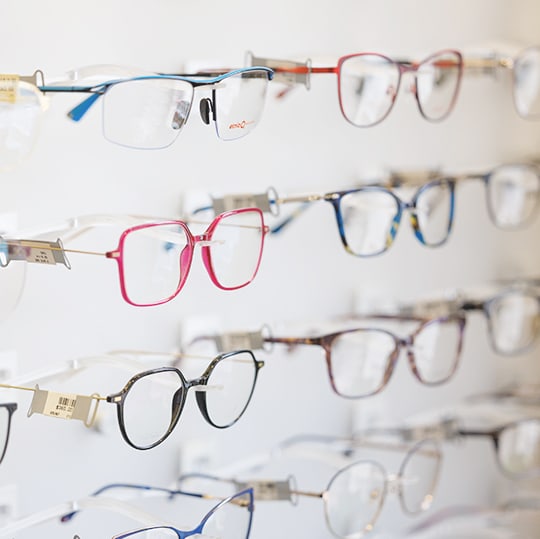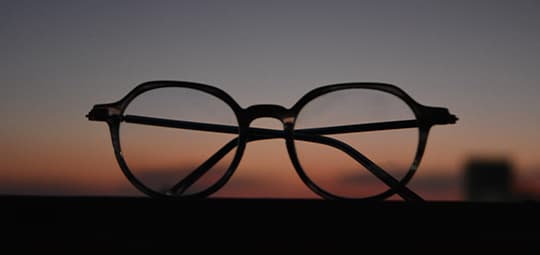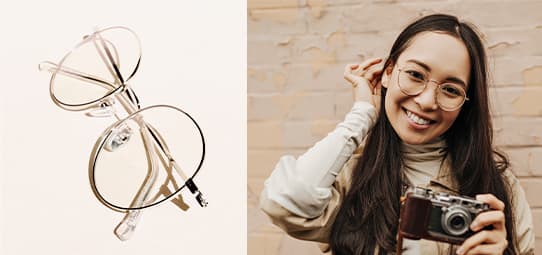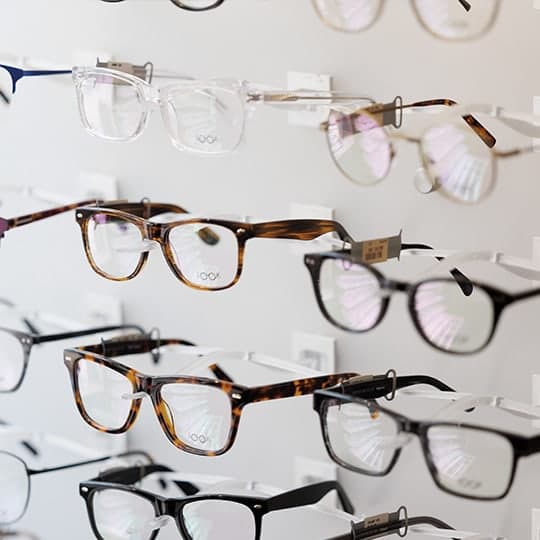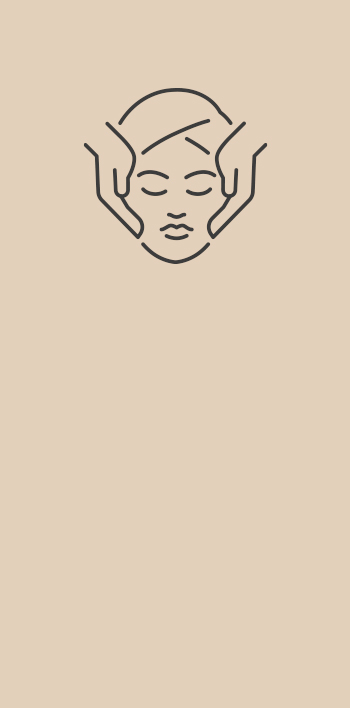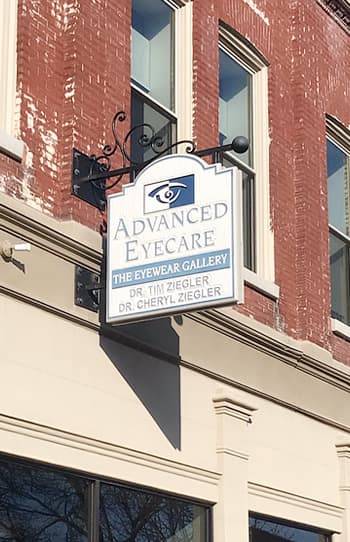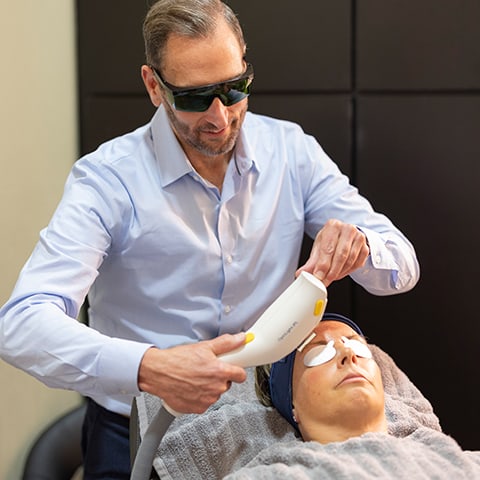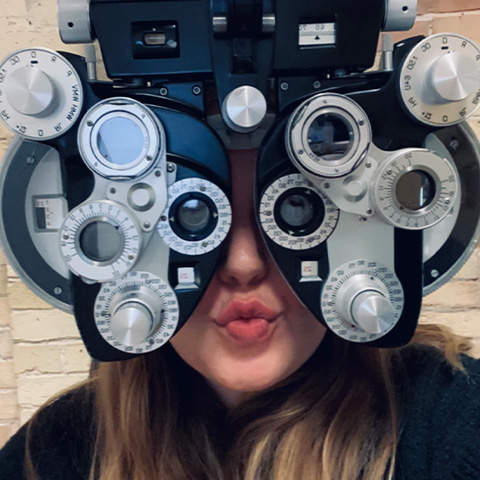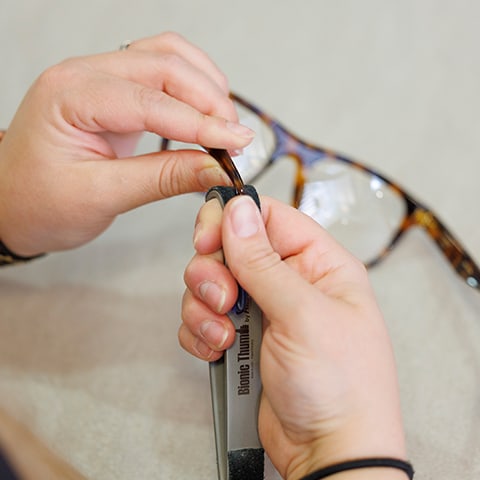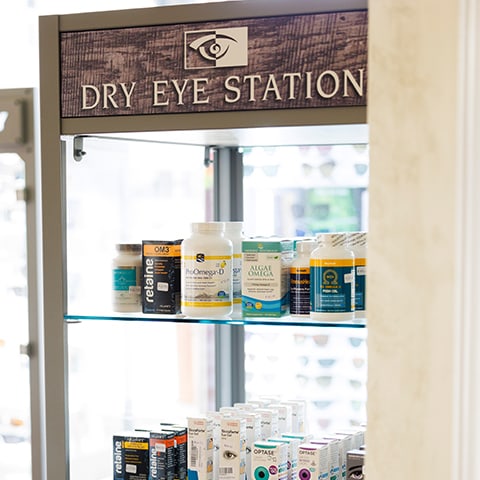Have Your Vision Needs Met with Care & Precision
The team at Advanced EyeCare & Aesthetics is here to help you feel at ease, regardless of where you’re at with your eye health.
Whether you’re struggling with pesky dry eye symptoms or are dealing with a more serious condition, we can provide care aimed at supporting your long-term visual clarity and eye health.
Let’s take charge of your eye health together. Book an appointment with us today.
Our Approach to Eye Exams
At Advanced EyeCare & Aesthetics, we provide in-depth eye exams with a suite of technology. Our goal is to get a complete overview of your eye health and detect subtle problems that may be developing.
Our diagnostic technology and thorough approach help us create personalized treatment plans. We’ll consider your personal health and needs when recommending treatments for different eye conditions.
Cataracts
Cataracts are cloudy spots that form in your lens, leading to blurry vision and difficulty seeing clearly. This condition typically develops with age but can be influenced by other factors and certain medical conditions, such as diabetes.
Surgery may be required to remove the cataract in your eye and replace it with an artificial lens to restore your vision. You can reduce your risk of developing cataracts by:
- Wearing sunglasses with full UV protection
- Quitting smoking
- Following a healthy diet
AMD
Age-related macular degeneration (AMD) can affect people differently, and you may not notice any changes in your vision early on, which can make AMD hard to spot without an eye exam.
There are 2 types of AMD, wet and dry. Dry AMD is more common and tends to develop gradually. Wet AMD can develop suddenly and may require prompt treatment.
As the condition progresses, the range of symptoms you might experience can include:
- Distortion or bends in what should be straight lines (such as lampposts or door frames)
- Dark spots in your central vision
- Fading colors
- Poor night vision
- Blurred vision
- Objects appearing to change shape, size or color, or moving and disappearing
- Light sensitivity
- Difficulty reading
AMD Prevention
The cause of macular degeneration is not fully understood. However, there are some factors that may increase your risk. This includes having a family history of the condition and being over the age of 50.
You can minimize your risk of developing AMD by:
- Quitting smoking
- Eating a healthy, balanced diet with plenty of fruit and vegetables
- Moderating your alcohol consumption
- Maintaining a healthy weight
- Getting regular exercise
Treatment for AMD
Unfortunately, there is no cure for AMD. In the case of dry AMD, the treatments are aimed at supporting and maintaining your vision. This can include making lifestyle adjustments, such as using magnifying glasses to help with reading.
Wet AMD can be treated with anti-vascular endothelial growth factor medication, which helps stop your vision from deteriorating further. Laser therapy is another possible treatment for wet AMD, but not everyone may be a good candidate for this procedure.
Diabetic Eye Disease
Diabetes occurs when the body is no longer able to regulate its own blood sugar levels and requires intervention to keep them stable. Many people are surprised to learn that having diabetes can also affect your vision.
Diabetes can damage the blood vessels in your eyes, leading to conditions like diabetic retinopathy. Without treatment, diabetic retinopathy can cause vision loss. Diabetes can also increase your risk of developing other eye conditions. For those reasons, people living with diabetes are strongly encouraged to get regular diabetic eye exams.
What To Expect From Diabetic Eye Exams
Diabetic eye exams are noninvasive. During the exam, you will be given eye drops, which will blur your vision. Once your vision is blurred, you will be asked to rest your head on a device and look into a camera that will take images of the back of your eyes.
You will see a flash when each image is taken. Using those images, we can assess the structure of your eyes, including the retina, and look for any abnormalities.
In addition to the images of the back of your eye being taken, you will also be given a visual acuity test to help us assess the clarity of your vision and monitor the effects that diabetes could be having on your sight.
Glaucoma
Glaucoma is a group of eye diseases that can damage the optic nerve and cause vision loss. It is often associated with high pressure in the eye but can also occur with normal or low pressure.
There are several types of glaucoma, including open-angle, angle-closure, and normal-tension glaucoma. The risk factors for glaucoma include age, family history, high eye pressure, thin corneas, and certain medical conditions.
The treatment options for glaucoma include eye drops, laser surgery, and traditional surgery. Because glaucoma can develop subtly without easily noticeable symptoms, regular eye exams are strongly recommended for people who may be at risk.
Risk Factor Assessment
We can assess your risk of developing glaucoma and measure your eye pressure during your regular eye exams. We may also ask about your family history and other medical conditions you may have that could increase your risk of developing glaucoma.
Your sight is also important. People with farsightedness can be at a higher risk for narrow-angle glaucoma, a more serious type that can advance quickly. People with nearsightedness may have a higher risk of developing open-angle glaucoma, which can progress slowly without noticeable early symptoms.
Standard Glaucoma Testing
We will always check for glaucoma during your comprehensive eye exam, regardless of your risk level. This provides a baseline for comparison as you age. There are 2 tests we use for glaucoma: tonometry and ophthalmoscopy.
Tonometry
Tonometry measures your eye pressure. For this test, we will give you drops to numb your eyes. Then, a device called a tonometer will be used to apply a small amount of pressure with a warm puff of air.
Eye pressure is unique to each person, so it’s not always a reliable indicator of glaucoma, but it is another piece of information that helps us assess your eyes.
Ophthalmoscopy
This is an examination of your optic nerve. For this test, we will use eye drops to dilate your pupil, which makes it possible to see through your eye and examine your optic nerve.
Then, using a small device with a light on the end, we will magnify your optic nerve to assess the shape and color of your optic nerve in detail. Based on the results of these tests, we may provide additional recommendations and testing.
Additional Glaucoma Testing
Some of the other ways we test for glaucoma include perimetry, gonioscopy, and pachymetry. We’ll determine whether these tests are needed based on the results of the standard testing we provide during all eye exams.
Perimetry
Perimetry is a visual field test that helps us map your complete field of vision. During this test, you’ll look straight ahead into a device and tell us when you see a moving light in your peripheral (side) vision.
Try to relax and respond as accurately as possible. To help ensure accuracy, we may repeat the test to see if the results are the same. If you’ve been diagnosed with glaucoma, a visual field test is usually recommended at least once per year to assess changes to your vision.
Gonioscopy
This diagnostic exam helps us determine the angle of your iris and cornea. First, you’ll receive eye drops to numb your eye. Then, a handheld contact lens is gently placed on the eye.
A mirror on the contact lens shows us if the angle is closed and blocked (a possible sign of angle-closure or acute glaucoma) or wide and open (a possible sign of open-angle, chronic glaucoma).
Pachymetry
Pachymetry measures the thickness of your cornea, the clear window at the front of the eye. We may use pachymetry for a secondary confirmation of glaucoma.
During this test, a probe called a pachymeter is gently placed on your cornea to measure its thickness. Corneal thickness has the potential to influence eye pressure readings, so this test can be especially useful in confirming the presence of glaucoma.
Eye Disease Testing
We’re proud to have a suite of reliable technologies to test for various eye diseases. Our diagnostic technology includes:
- Heidelberg OCT testing: This detailed, noninvasive imaging test helps us precisely diagnose and manage various eye diseases, including glaucoma, age-related macular degeneration, and diabetic retinopathy.
- Optos retinal imaging: This noninvasive imaging technology captures a wide view of the retina in 1 image to help with early detection and monitoring of eye conditions.
- Dilated fundus exams: For this test, eye drops are used to enlarge the pupil, allowing for a detailed examination of the retina and optic nerve. This test helps us detect and monitor eye diseases like diabetic retinopathy, macular degeneration, and glaucoma.
Reach Out to Us for Quality Eye Care
We treat your eye health with the care and delicacy it deserves. Book an appointment with us today to stay on top of your eye health.
Our Services
Our Brands
Discover a blend of style, comfort, and clarity with our extensive collection of eyeglass frames and lenses. Whether you’re seeking the durability and flexibility for everyday wear or the luxury and elegance for special occasions, we have you covered. Embrace quality. Enjoy clarity. Experience Advanced EyeCare & Aesthetics.
